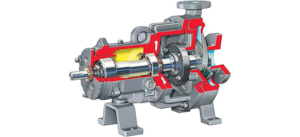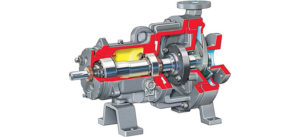Machine builders become reliable, fast and efficient

Machine manufacturers suffering from high costs and long unreliable lead times can make huge gains in terms of competitive edge if they manage to resolve the so-called ‘service paradox’: from relatively slow, unreliable and inefficient to reliable, fast and efficient!
Machine builders develop and manufacture often-complex machines, many of which are unique. They are frequently stand-alone projects, configured or even engineered to order (EtO). Over the years my colleagues and I provided consulting services to a number of such companies. In this time I’ve noticed some major differences, but above all a number of important similarities.

When I think of those similarities, the first thing that comes to mind is the unique innovative strength and craftsmanship that continue to help companies set themselves apart. However, as a supply chain guy, I also see a shared challenge: to complete projects reliably, on time – and preferably even quicker – and within budget, despite growing uncertainty and complexity. However, despite numerous attempts, many manufacturers are still waiting for the actual breakthrough…but I’m firmly convinced that they won’t have to wait much longer. Inspired by shining examples, ambitious machine builders will be able to make a real difference thanks to improved reliability, speed and efficiency.
Free time
Without exception, all the manufacturing companies we’ve advised have been hindered by a low flow efficiency, i.e. the percentage of their total lead time which actually added value was often depressingly small. In most cases, the work laid around somewhere waiting for the next step, both in engineering and production. It’s a terrible shame, of course, if a critical resource is sitting idle further downstream or if the time wasted here causes you problems at the end of the process. At the same time, a low flow efficiency can actually be good news because it offers a fantastic opportunity to improve your reliability, speed and efficiency.
According to the first law of supply chain physics, the large degree of variability and uncertainty in machine building can only be compensated for through capacity, time and/or inventory. Inventory is often a no-go in machine building, so that just leaves us capacity and time. Because capacity costs money and time is free (in principle), it’s logical that machine builders should preferably use time to compensate for variability – so ‘free’ time seems to be the golden egg that will help machine builders to resolve the service paradox.
Surprisingly easy
The only question is, of course, where should this free time come from, in particular if there is already pressure to reduce delivery times? In the case of a low flow efficiency, however, this question is surprisingly easy to answer. After all, there is plenty of free time up for grabs between the various steps in the process. Shortening and/or eliminating the transitions will free up valuable time which can efficiently and effectively compensate for the variability. However, that’s easier said than done.
Time and again, the most important source of long and unreliable transitions is revealed to be the way in which our organizations are structured and managed. In good faith and aided by trusty planning methodologies, we have usually subdivided the whole into a number of individual parts, each of which is responsible for its own local efficiency and delivery reliability. As a consequence, departmental heads are afraid of underutilization so they plan capacity conservatively and prefer to overestimate their lead times out of fear of missing deadlines.
In the meantime, project managers – who are responsible for completing their projects on time and within budget – are continuously looking to be given priority, and preferably the cheapest resources. In the meantime, on the shop floor, batching is necessary to help out the departmental manager and multi-tasking is needed to keep the project manager happy. The end result: numerous long and unreliable waiting times, chronically unreliable schedules and high costs stemming from the fire-fighting needed to rescue whatever can still be rescued, often right at the end of the process.
Resolving the service paradox
Clearly, resolving the service paradox calls for a fundamental change in behaviour and decision-making; choices should be made in the interest of the whole rather than one’s own part of it. For example, to regularly supply workable work in the actual order of priority instead of irregularly supplying half-done work in line with a schedule that’s no longer up to date. For example, to continuously complete tasks at a steady speed instead of veering between all and nothing. And, for example, to consider vertical integration and specialization to foster flow rather than differentiation and horizontal integration based on local synergies.
Needless to say, this calls for a different way of organizing and managing things: organization and management focused on flow rather than local efficiency, and on meeting the delivery deadlines agreed with customers rather than self-inflicted local due dates. Speed plus efficiency is the recipe for improved reliability.
A number of successful pioneers have already proved that the service paradox can be resolved. This is a great opportunity to learn from these pioneers and to make a real difference thanks to improved reliability, speed and efficiency.


